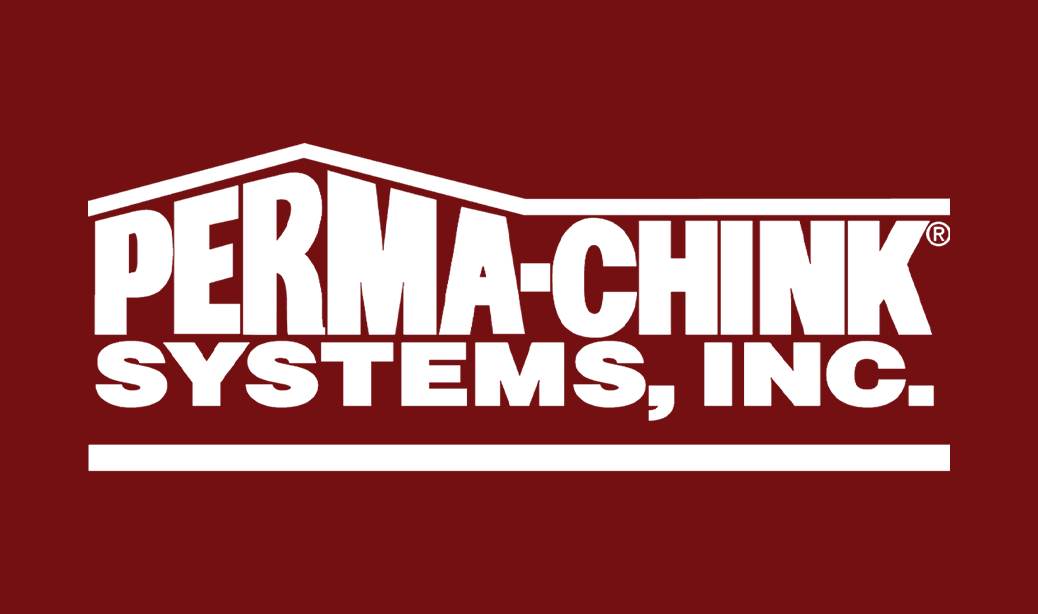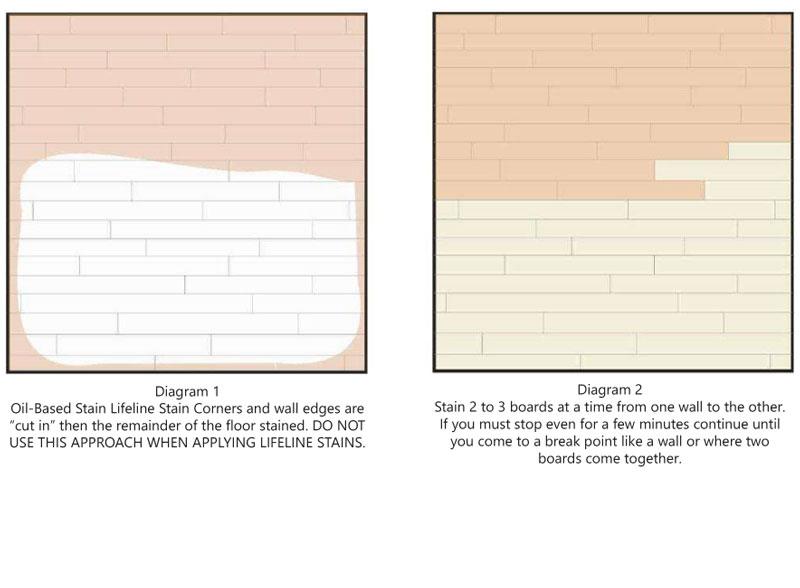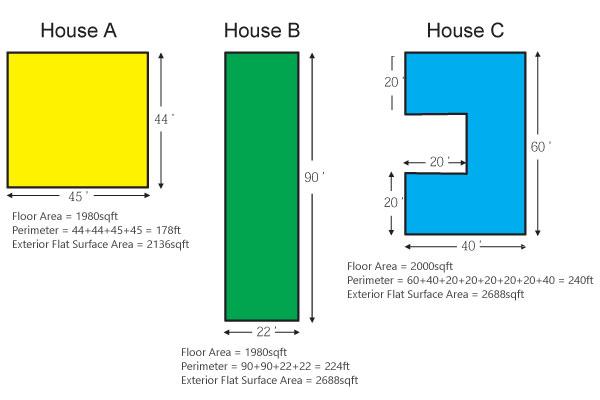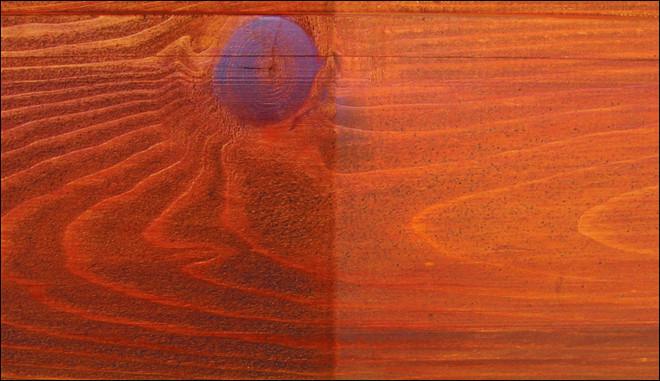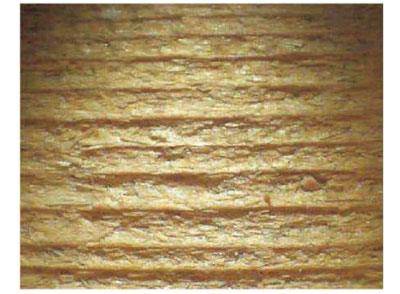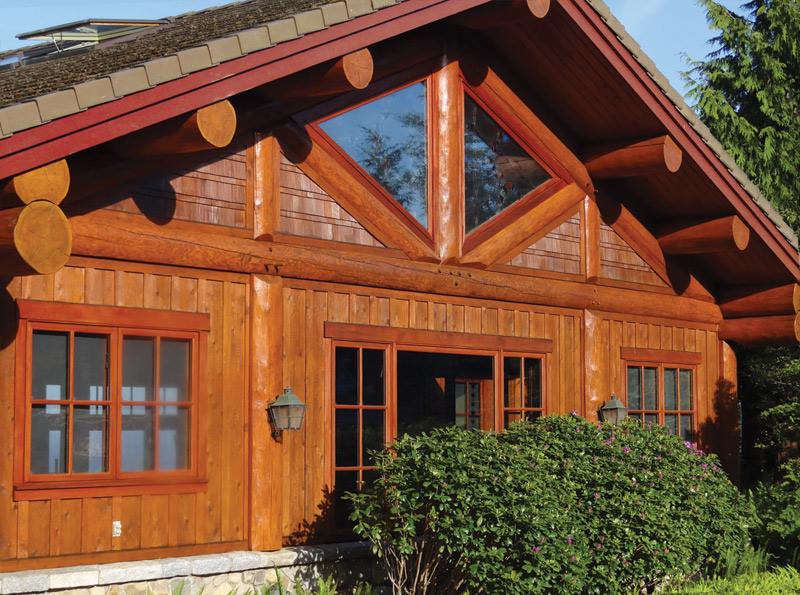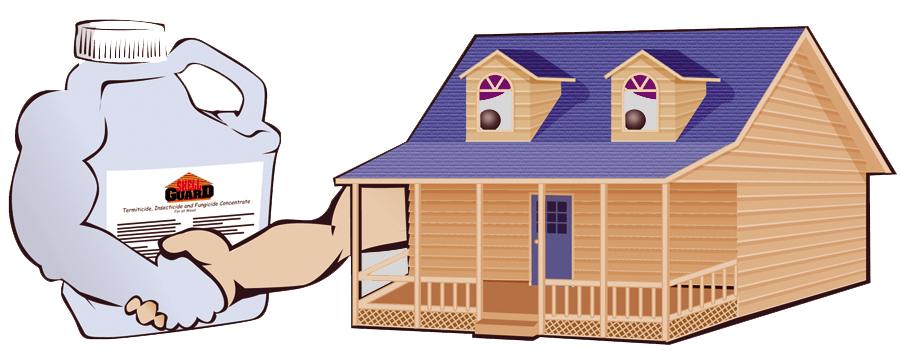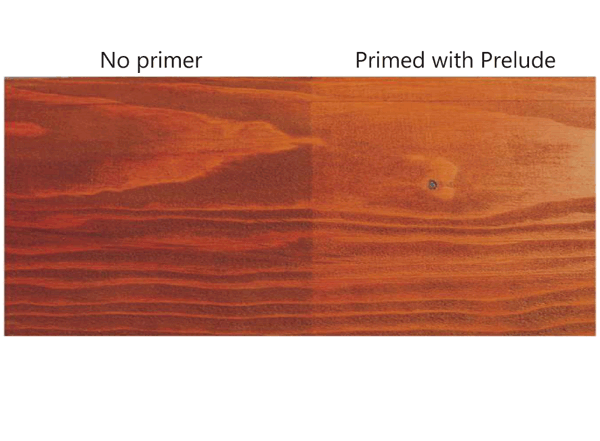Library
Many people do not understand how film-forming stains work and how they adhere to wood. Much of this misunderstanding relates directly to the term “stain.” In the past, staining wood meant that the wood fibers themselves became impregnated with color and that the color penetrated into the top layer of wood. Even today most oil-based stains work in this manner. Once stained, if the surface is rubbed or scratched, the color of the stain still remains since the solvents carry the colorants into the top layer of wood which make the fibers beneath the surface the color of the stain.
On the other hand, water-based stains like our Lifeline™ products do not actually penetrate into the wood fibers! That’s one reason we try to refer to them as finishes rather than stains. But since the term “stain” has been used for hundreds of years, it’s difficult to change the vernacular that defines the difference between oil-based and water-based products.
When we talk about the penetration of our products, we are referring to their ability to fill the microscopic voids, fissures and pores on the surface of the wood. This enables the film to adhere tightly to the wood’s surface. It’s this property that we call adhesion. However, if the film is scratched or rubbed off of the surface, the original color of the bare wood will be visible.
Why is this important? We’ve had customers call us thinking that the product we shipped them was defective because they were able to rub or scrape the film off and there was no color evident under the film. In their mind, the wood had not “taken the stain.” That’s because they had never worked with a water-based, breathable film stain before, and were used to seeing the results produced by a penetrating oil-based stain.
So how can we best explain how our products work? Most people are familiar with use and behavior of latex paint. It behaves quite similar to a water-based film forming stain in that if it is scraped off of the surface uncolored bare wood becomes visible. Our water-based stains behave in a similar way to latex paint. The benefit is that the protection offered by a film on the surface of the wood is far superior than that provided by a product that soaks into the wood leaving the surface of the wood exposed to the sun and weather.
Microscopic Cross-Section of Wood Surface
The wood surface absorbs an oil-based penetrating stain into the top layer of wood fibers, carrying the pigments along with it. The fibers themselves are thus “stained” with the pigments.
A water-based, film-forming stain sets on top of the wood surface and fills in many of the small cracks and fissures, resulting in a smoother surface; however, the wood fibers themselves retain their original color.
“Which of your products should I use to seal my log home?” is a question often put to us by prospective customers. Why do so many people refer to “sealing” a log home rather than staining or finishing? Nobody talks about sealing siding or trim on a stick built home. They are either stained or painted, yet sealing is the term used by many log home owners. As it relates to log homes the term “sealing” dates back to the early 1900s. Prior to then, most log homes were constructed using heartwood from old growth timber and left bare.
Since heartwood is resistant to insect and decay infestations, and the people who built log homes knew better than to not include porches or leave log ends sticking out beyond the roof line, the best thing for them to do was to leave the logs bare but keep them dry. That’s why so many of them survive to this day.
Sealers
Starting at the end of the 19th century, old growth timber was no longer readily available and people started constructing log homes using second or third growth timber that was mostly sapwood. They also stopped using many of the good construction practices of their ancestors, so problems with bugs and decay began to arise.
At around the same time, the petroleum industry began to develop, for the first time, affordable oil and tar products. Log home owners soon discovered that smearing some of these oil derivatives over their homes helped eliminate some of their insect and decay problems. In their minds, they had “sealed” the logs, and the term has stuck with us to this day. Up to the 1950s, unless the logs were painted, log homes came in two basic colors, black and gray.
So, are any of our Lifeline™ exterior finishes sealers? As the term relates to keeping liquid water from entering the wood, they all are. All of our Lifeline stains (Ultra-7, Ultra-2, Exterior, and Accents), as well as Prelude™ Clear Primer and Advance™ Topcoat, all act as water repellents to keep the underlying wood dry.
There is a misconception that our pigmented finishes alone do not act as water repellents and it’s the Advance Topcoat that seals the surface. That’s why many people call our Advance Topcoat a sealer, but that’s not an accurate description of the product. All of our stains are excellent water repellents. They may not bead water, but they provide a polymer-film barrier that prevents liquid water from penetrating into the wood.
Stains
Calling our pigmented finishes “stains” can also be a bit confusing. The term itself implies that the wood fibers are “stained” with the colorants contained in the products. However, in the case of film-forming, water-based finishes, the wood fibers are not impregnated with the colorants like they are when penetrating oil stains are used. If wood is painted with a latex paint, no one expects the paint to impregnate the underlying wood. So if you believe that your wood is not “taking” our Lifeline stain, it’s important to understand that our finishes behave more like latex paints than penetrating oil-based stains.
Since most people are comfortable with “stain” as a product that alters the color of the wood and still allows the grain to show, using “stain” is more accessible for customers (as well as when searching on the Internet).
Topcoats
Top coats are clear finishes that protect and cover the pigmented finish on logs, timbers, and other wood features. One of the most frequently asked questions we receive about our Advance Topcoats is why isn’t it included with the stain. The answer is that if we did, it would no longer be a topcoat. Topcoats play a specific role in protecting any finish system.
Take car finishes for example. The pigmented paint provides the color and helps protect the metal from corrosion. It is formulated to adhere to the primer and retain its color. The car’s clear topcoat is designed to protect the color coat from abrasion, dirt and sunlight and the only thing it has to adhere to is the color coat. Our Advance Topcoats play essentially the same role, to protect the color coats from the weather, sunlight, and dirt.
Although our stains adhere to bare wood, previously applied stains, and existing topcoats, it is not necessary for Advance to adhere to bare wood since it clearly states on the label that it’s to be applied only over an existing finish.
Although most topcoats on the market are just unpigmented versions of stains, Advance is specifically designed as a high performing topcoat with a unique set of characteristics that have yet to be duplicated by anyone else in our industry. One of the reasons Lifeline Advance outperforms all other topcoats is that it is designed for a very specific purpose and should never be applied to bare wood.
Before you apply coatings to interior surfaces, always thoroughly wash them with a recommended cleaning solution. Log Wash is made for this purpose and should be used as follows:
Mix 1/2 cup of Log Wash Concentrate in a pail with one gallon of warm water. Apply the Log Wash solution to the wall with a rag or sponge. Allow the solution to remain on the wall, keeping it wet for at least 10-15 minutes. Using a clean rag or sponge and a pail of clean water, wipe the Log Wash solution off of the surface. Frequently rinse the sponge or rag in the pail of water and frequently exchange the water in the pail with clean water.
To make sure you have the correct amount of finish, read this Tech Tip on determining square footage, as log homes are built in various layouts which all affect square footage.
Applying Interior Finishes
1. Stir the containers of LIFELINE finishes thoroughly before starting. Remember that even clear coats require stirring to blend different ingredients within the container. Use a drill-powered paint agitator for 5 minutes on a newly opened container to completely mix settled ingredients.
2. NOTE: Sure Shine should be hand-stirred, using a paddle or a paint stick to avoid entraining air in the liquid.
3. When using multiple containers of colored finishes, they should be ‘boxed’ (see ‘Mixing and Boxing Stains & Topcoats‘). Do this by thoroughly stirring LIFELINE in its original container and then combining contents of different containers together in a separate container.
4. To avoid leaning ladders against freshly applied LIFELINE, it is best to start at the top of the wall. Place ladder end on unfinished logs below your work line.
5. Wipe up runs and drips immediately. They will come off best using a wet rag.
6. When you take a break, submerge the sprayer tip in water to prevent clogging with partially-dried LIFELINE.
7. Avoid lap marks. Work on one or two courses of logs at a time and never stop in the middle of a log. Work to natural break points such as corners, window edges, butt ends of logs, or other natural break points.
8. Continue application by running a wet edge until a break point is reached. As you approach a break point, feather your wet edge and continue working the LIFELINE from your brush until the product runs out. Start spray pattern away from the break point and finish back-brushing to the break.
9. Apply LIFELINE in thin coats. If it runs down the wall, you are applying too much. OBSERVE CORRECT COVERAGE RATES as listed on label.
Can Lifeline™ Interior stains be used to finish interior floors? Technically the answer to this question is yes, but we rarely recommend them unless whoever is going to be finishing the floor fully understands the characteristics of water-based, transparent stains and knows how to apply them.
Professional floor finishers have been using oil-based stains ever since it became fashionable to add some color to flooring. The application techniques and procedures used for applying an oil-based floor stain has not changed for decades, so most everyone selling or applying floor finishes will give a standard set of instructions to anyone planning to finish their own floors. However, if these directions are used when applying a water-based stain, the results will be unsatisfactory.
Once the floors are sanded and cleaned, a professional floor finisher using an oil-based stain will usually “cut in” around the baseboards and corners with a brush, rag, or pad, then apply the stain to the remainder of the floor [see Diagram 1].
Since oil-based stains take a fairly long time to dry, the interface between the “cut in” areas and the center area can be feathered together, so it becomes impossible to see any differences in color. Water-based stains dry very quickly, so it’s impossible to feather in any previously stained areas without creating lap marks. However, there are some distinct advantages for using a Lifeline water-based stain. These advantages include little or no odor, soap and water clean-up, quick dry time, and environmental friendliness.
If you choose to use a Lifeline Interior stain for your floor, here is the way to apply it:
1. Sand the floor as usual.
2. Vacuum, then wipe the floor with a damp cloth. Keep rinsing the cloth so that it does not accumulate too much sanding dust. It will raise the grain a bit, but that’s okay. The water-based Lifeline stain will end up raising the grain anyway, and the slight roughness will be dealt with later in the finishing process.
3. Once the floor is dry, apply one light coat of Prelude™ Clear Wood Primer with a brush or pad. This will seal the surface and help prevent any blotchiness due to varying porosity from the sanding process. Don’t worry about lap marks or surface roughness at this stage.
4. After the Prelude dries, apply the first coat of Lifeline stain. This is where care must be taken to avoid lap marks. Start at one corner of the floor and work on two or three boards at a time all the way across the floor. If you must stop before you get to the other side, be sure to continue to where one board ends and another begins [see Diagram 2]. Apply Lifeline in a thin coat and back-brush as you proceed.
5. When the floor dries you can decide if you want to apply another color coat. It’s not necessary and depends on how much color you want to obtain. Do not sand.
6. Once you have attained the desired color and the floor is dry, you can begin applying Sure Shine Polyurethane Finish to the floor. The technique for applying Sure Shine is different than applying the Prelude or Lifeline stain, so be sure to read the “Applying Sure Shine” Technical Tip before you start.
7. Now that you have the first coat of Sure Shine on the floor, and it’s good and dry, you can give the floor a light sanding using fine sandpaper (180 grit or higher) to remove any surface imperfections. Do not sand too hard or you’ll end up removing the finish. Once sanded, remove any dust with a damp cloth. Sanding between subsequent coats will not be necessary. Floors usually take two to four coats of Sure Shine to assure maximum durability and desired uniform appearance.
8. Although you can usually walk on the finished floor within a few hours, it’s best to wait 72 hours before replacing any furniture or subjecting the floor to heavy traffic.
What about applying Sure Shine over a newly applied oil-based stain? There is no problem with this as long as the oil-based stain is good and dry. Typically, we recommend waiting a week or two, but it really depends on the temperature and humidity. It is best to check with the manufacturer of the oil-based stain to see what drying time they recommend before applying a water-based polyurethane clear coat.
“My log home is around 2000 square feet. How much stain will I need?”
Often that’s all the information a customer has available when they first call Perma-Chink Systems. When people talk about the square footage of their home, they are usually referring to the floor area that may or may not include a garage. But does this number give us enough information to make an estimate of how much stain and topcoat will be required to finish a home?
Look at the outlines of three log homes with approximately 2000 square feet of floor area at the bottom of this page. Home A is just about square, Home B is long and narrow and Home C has two extensions on the ends. Even though the floor areas of these homes are nearly the same, the perimeters of the homes are significantly different and the perimeter is a significant factor in determining total exterior wall surface area.
For example, if we have flat log walls that are 12 feet high and ignore window and door openings, the exterior wood surface area of Home A is 2136 square feet whereas the exterior wood surface area of Home C is 2880 square feet, a difference of 35%. That’s why knowing the floor area of a home does not really help us determine the amount of finish required to stain a home.
So how can you determine the square footage of your exterior log walls?
It’s easier to work up the numbers one wall at a time then add them together. Start by measuring the length of the wall with a tape measure. Then either measure the height, or estimate it by counting the number of log courses and multiplying the number of courses by the diameter or height of the logs. Just remember that the diameter, or height, is in inches, so you will need to convert inches into feet. For example, if the logs are 6 inch high logs, they are 6/12, or 0.50 feet, in height; and if they are 10 inch logs they are 10/12, or 0.83 feet, in height.
So if we have a wall that is 25 feet long and has 16 courses of 10 inch logs the calculation is:
25 ft. x 16 courses x 0.83 ft. = 332 square feet.
Now this assumes the wall is flat, but what if the logs are round? A rule of thumb is to add 25% to the square footage of a wall to compensate for the increased surface area created by the curvature of the logs. So in the above example, if the logs are round you would multiply the 332 square feet by 1.25 resulting in 415 square feet of wood surface area.
What about log siding?
Round log siding has a curvature too but it’s typically not as pronounced as full logs. In this case a multiplying factor of 1.15 will work. Gable ends appear to present a challenge in calculating their square footage, but if you take their height from the base to the peak and the width end to end, multiply them together, then divide the number by 2, and you’ll come pretty close.
Estimating the square footage of exterior wood surfaces is not easy and mistakes are commonplace. Just remember a few tips: never multiply feet by inches, measure everything twice, and have someone else check your calculations.
We usually recommend not to deduct door and window openings (unless the windows account for over 20% of the wall area) or chink joints. It’s always best to stain the log edges of a chink joint before the joint is chinked to protect the wood from water infiltration. The last thing is to add at least 10% extra product to your order. It’s better to have some material left over than it is to run out near the end of a job.
Here is a comparison between three homes with similar floor square footage. You can see from the calculations how the footprint of your home can affect the surface area of your home.
PRELUDE is a clear wood sealer and primer for surfaces that have been media blasted. PRELUDE is enhanced with UV Boost for maximum protection against graying due to ultraviolet light exposure.
Over the past few years media blasting has become a popular tool for removing old finishes in preparation for applying a new coat of stain. However, media blasting significantly increases the porosity of the wood, thus allowing it to absorb much more stain than those wood surfaces that have been chemically stripped, sanded, or pressure washed.
This high absorption results in a darker final stain color than that typically reflected by a color chart. In addition, wood is not uniform and media blasting often emphasizes the differences in wood grain absorption, even on a single log. This results in streaks and blotches due to varying amount of stain absorbed by different areas of the wood. PRELUDE solves many of the potential problems created by media blasting.
One coat of PRELUDE primer fills the pores of the wood and provides a uniform surface film in preparation for the application of a pigmented stain. However, it should be noted that PRELUDE is a wood sealer/primer and is not suitable as a clear, final finish!
Recommendations for the use of Prelude:
1. After a home has been media blasted.
2. If a home is aggressively pressure washed to the point where the surface is feathered and the porosity of the wood varies from area to area.
3. On wood where the surface has been unevenly sanded.
4. On rough cut siding before the application of the color coat(s).
5. If a section of a wall has been repaired or replaced and the new sections don’t match the surface characteristics of the old.
6. Whenever an older home (more than 80 years old) is going to be restored. Once the surface of old wood is cleaned of grayed wood it typically takes on the porosity characteristics of a blasted surface.
7. Whenever you want to use only clear coats on interior surfaces. Although Interior Clear can be used, the use of Prelude as the first sealing coat is a better deal, since it already contains UV Boost. Once the Prelude dries, Acrylic Gloss or Satin or Sure Shine™ Gloss or Satin can be applied over it.
8. Whenever a home is completed but may remain without an exterior finish for many months, a coat of Prelude will help prevent surface graying and make it easier to clean when it comes time to stain. Adding a dose of Stay Clean™ to the Prelude will help also prevent the growth of surface mold and mildew.
For use exclusively with Lifeline wood finishes.
With so many different choices on the market for wood restoration and cleaning products, it can be confusing trying to decide just what to use. Unfortunately, when it comes to cleaning or restoring wood, there is no “one size fits all” approach. Each unique situation has a chemical solution that best solves that problem. Perma-Chink Systems understands these challenges and we have developed specific products to address each situation.
We offer a wide range of cleaning and restoration products that are designed to be fully compatible with our other wood care products. Our name says it all – Perma-Chink Systems. If you choose to stay within the system, you can have confidence in a fantastic outcome. It is difficult to determine exactly what is in a typical store brand of cleaner. Many of these cleaners, conditioners and brighteners may contain ingredients that are not compatible with our products. Some brands of wood cleaners may leave residues that prevent adhesion of our stains – even after considerable rinsing. Many of these cleaners may even damage the wood to the extent that adhesion of our stains may be a serious problem. Furthermore, a number of these cleaners can even cause unsightly wood discolorations. But do not worry, stop playing the guessing game. For over forty years now, Perma-Chink Systems has been working towards creating and testing products that work together for your success! Let us take a closer look at a few of them.
Log & Timber Wood Cleaners

Our wood cleaner Log Wash™ was originally developed to clean coated wood surfaces of mold, dirt, oils and other debris and not harm the coating. However, it was discovered that Log Wash could also be used to clean bare wood surfaces. The chemistry of wood is complex. For example, wood naturally contains chemicals that help protect it from disease and rot. Some of these natural extracts and resin oils can – and do – cause discolorations that can be undesirable to look at. Wood tannins are one such class of chemicals that, when combined (or complexed) with iron, can form dark discolorations on the surface the wood. Our Log Wash contains Phosphoric Acid which can also form chemical compounds with iron, such as iron II phosphate or iron III phosphate, that compete with the natural tannins present in most wood species. By effectively reducing the amount of free iron available to the tannins, these dark ink-like discolorations can be prevented.
Using Log Wash not only helps to clean but to also stabilize a very complex system! Many available commercial cleaners are also high in pH, such as caustic cleaners. These cleaners can do damage to the coating by softening it. Once these cleaners are rinsed or pressured washed off, the coating comes off with it. Using Log Wash according to our labeled instructions keeps the pH slightly on the acidic side where wood is naturally. By keeping the pH balance close to where wood is naturally, some undesirable chemical reactions that could more easily occur at high pH can be avoided altogether.

Wood is a unique, natural substrate that appeals to us due to its beauty and natural characteristics. Are all wood species the same in chemical composition? The obvious answer is no they are not. Although all wood contains cellulose and hemicellulose, it is the wood extractives and resin oils that contribute in large part to the differentiation of one species from another. In addressing these differences it brings us to our next wood cleaning product: Cedar Wash™. This product was developed to deal with certain species of wood that naturally contain very high levels of extractives and resin oils. The presence of these extractives can cause several problems including discoloration, stains and adhesion problems with a coating. Wood that falls into this category of “extractive-rich” includes Redwood, Western Red Cedar, Walnut and Mahogany. A second class of wood that contains high levels of extractives but not as high as the “extractive-rich” includes Southern Pine, Douglas Fir, Spruce and Cypress.
Cedar Wash is a Ready-To-Use formula designed to effectively remove resin oils and wood extractives from the surface of wood and it will not harm finishes that are in good condition. In addition, the product is safe to use on chinking and sealants and has a low environmental impact due to its safe chemical composition.
Dealing With Dark, Vertical Streaks
What if my wood already has metallic iron tannate stains what can I do about them? First, you need to be certain that the discoloration is from iron tannates. You can perform a simple test with a Q-tip dipped in diluted 3-to-1 bleach solution. Apply this to a small test area and if the dark color disappears, your color problems are most likely from surface mold. In contrast, iron stains will also have the appearance of streak marks running down a wall in a vertical direction and will not go away with the Q-tip test. Oxcon™, which contains Oxalic Acid, was developed to help brighten wood with dark discolorations due to iron stain. Ferric Iron, which is dark in color, will react with Oxalic Acid to form Ferrous Iron which is colorless. The key to all this working properly is good rinsing afterward. If the oxalic acid is not rinsed well, it can leave surface crystals that can interfere with adhesion.
Brighten Bare Wood Back to Original Color

Bare wood when left exposed to the elements will weather. What do we mean by weather? Wood is continually going through changes due to sunlight, water, mechanical forces and heat. Each of these can present problems, but sunlight does considerable damage to the surface of the wood due to a process called photooxidation. In this process lignin, which provides support structure in the cell wall, is broken down and degraded, turning the wood grey in appearance.
After this damage has occurred it would be unwise to stain or paint on the surface of the damaged wood. Ask yourself would you apply paint to an old rusty metal pole and expect it to stay adhered for a long time? Of course not. In the same way, the compromised wood surface must first be removed through mechanical and chemical means before applying a coating to the surface. Perma-Chink’s product to deal with this problem is called Wood Renew™, and when dissolved in water produces hydrogen peroxide.
This, along with additional highly effective cleaning agents, work together to remove resin oils, dirt and disinfect the wood. A pressure washer is used to help mechanically remove the damaged layer of wood leaving behind a bare, clean, and newly restored surface to apply a coating. The appearance of the wood changes from a dark gray to a freshly milled yellow color. It is truly amazing to see the difference this process can have on the wood. Surface mold and spores, dirt and damaged wood fibers are all removed in this process. We are cleaning and restoring wood back to its original, bright clean form.
Finish Removal
If you have an existing finish that you need removed, we have two chemical options for you. The first is called S-100™. S-100 uses a proprietary, environmentally safe ingredient to help soften the existing film prior to removal. It forms a gel on the surface of the film, allowing it to have maximum contact time with the surface. The surface is then rinsed using a pressure washer to remove the film and S-100 from the surface. Our second option, called Strip It®, uses a highly effective but low toxicity active ingredient called Benzyl Alcohol. Like the S-100, this product also acts on the surface to soften the film and is removed with the assistance of a pressure washer. Both S-100 and Strip It are water-based products that are environmentally friendly and safe, as opposed to hazardous solvent-based products like methylene chloride, methanol, and petroleum solvents. Strip It is practically odor free, S-100 has a citrus odor, and both are non-flammable and biodegradable.
Rinse Completely
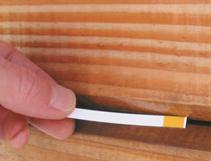
Finally, there is one important procedural step that all these cleaners and wood restoration products share, and it has to do with proper rinsing. Each product used should be thoroughly rinsed from the wood. You might ask yourself, “How do I know with certainty that I have rinsed enough?” Perma-Chink Systems can provide help with this too. We offer pH Strips that are used for testing the pH of the rinse water and wood. We strongly recommend using pH strips to help you determine if you have rinsed the substrate back close to a relatively neutral pH range of 6.5 – 7.5. Improperly rinsing the wood can lead to many problems that could easily have been avoided if proper rinsing were done in the first place.
Final Notes
At Perma-Chink Systems we have worked tirelessly to develop quality log and timber home products that work for you each step in the process, while at the same time being aware of your safety and the stewardship of our environment. We always strongly recommend that you follow all labeled instructions when using our products.
In addition, we have developed technical tips to help guide you through the process. For example, we have a cleaning guidelines and pH tech tip and many more all designed to assist you in solving your problems. These tips can be accessed on our website www.permachink.com under Info > DYI Section. We also have product specialists available at 1-800-548-3554 to help answer any questions you might have. We hope this information helps you to better understand the purposes and differences behind each of our cleaning and restoration products.
If a home has been media blasted, is it really necessary to wash down the wood with a Log Wash™ solution before it is stained? We believe it is and here’s why. If corncob grit or walnut shells are used, and you take a close look at a blasted wood surface, you will find lots of particles embedded in the wood. Along with the particles are invisible mold spores that can germinate and feed on these biodegradable media sources.
To prevent mold spots from developing under the stain, these mold spores need to be removed, preferably by washing the surface with a solution of Log Wash (2 cups per gallon of clean water). Even if glass, dry ice, or other types of blasting media is used, we still recommend washing down the blasted surface to remove any remaining foreign matter substances that may be adhering to, or embedded within, the wood. Blowing high pressure air on the wall will not totally remove all of the dust and old finish residue; and without actually washing the surface, you run the risk of compromising the adhesion of the new finish.
On the other hand, most chemical strippers and cleaners do a good job eliminating mold spores and dust particles which is why it may not be necessary to use Log Wash if the home is going to be stained within a few days stripping or cleaning. However, if the stain application is delayed more than seven days after the wall has been chemically cleaned, an application of a two cups per gallon Log Wash solution should be made, rinsed, and the wood allowed to dry before the stain is applied. It only takes a few days for enough mold spores, pollen, and dirt to accumulate on bare wood to create a problem.
We always recommend thorough cleaning and preparation procedure because careful preparation is the best way to help prevent unsightly fungal growth under our transparent finishes, and to ensure the best adhesion and longevity of our exterior stain and topcoat systems.
CHEMIST’S CORNER: Can All Wood Species Be Prepared the Same Way, Using the Same Cleaning Products?
The obvious answer to this question is NO. Although all wood species contain many of the same components – including cellulose and hemicellulose and minor amounts of extraneous materials – it is the wood extractives that differentiate wood species from one another.
Understanding the Bleeding of Wood Extractives.
Wood extractives are compounds present in the softwood and heartwood of a tree that contribute to such properties like color, odor, decay and insect resistance, density, and flammability. When used for log homes, naturally occurring extractives in the wood can migrate to the surface and discolor paint and finishes (water soluble extractives) as well as create adhesion issues (oil soluble extractives) for many coating types.
The organic components of the extraneous materials are referred to as extractives because they can be removed by extraction with solvents without altering the cellulose/lignin structure of the wood. Extractives include tannins and other polyphenolics, coloring matter, essential oils, fats, resins, waxes, gums, and starch. Depending upon such factors as species and growing conditions, the total extractive content of wood substance may range from less than 1% to 30% in extreme cases.
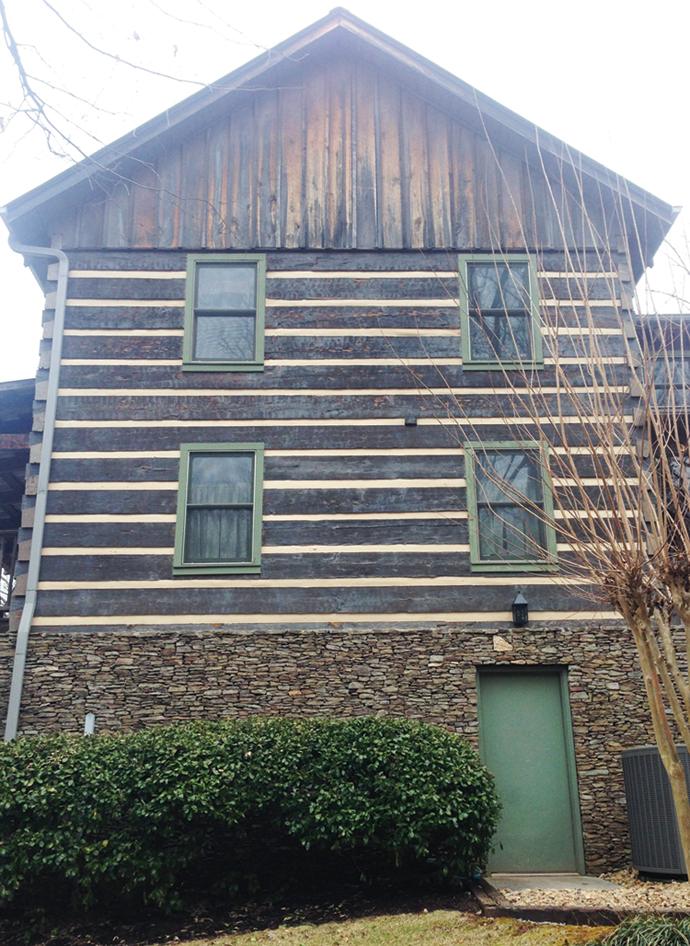
Wood Species and the Level of Extractives
All wood species contain wood extractives; however, there are a handful of wood species that are characterized as extractive-rich woods. This group includes Redwood, Western Red Cedar, Walnut and Mahogany. The second group of wood species that also contains higher levels of wood extractives but less than extractive-rich woods include Southern Pine, Douglas Fir, Spruce and Cypress.
The percentage of extractives in trees is generally low, but a high concentration is found in knots and heartwood of the tree. Knot bleeding can occur when a knot contains an excessive number of extractives. In these cases, the extractives consist mainly of rosin, fats and turpentine, and these extraneous materials can make up as much as 50% of the knot by weight. The ratio of extractives can change with the season and weather (if the tree is stressed).

Extractives Affecting Wood Color
Staining or discoloration of wood may result from chemical processes that convert originally colorless or light-colored extractives into intensely colored products. Most of the “chemical stains” result from oxidation of certain wood extractives during air seasoning or kiln drying. Some resins can bleed out of the wood, as seen in pine wood. Sometimes the extractive can react with foreign material.
Using Cedar Wash for High-Extractive Wood Species
Cedar Wash is a wood cleaner with a high pH solution, which can dissolve, soften, loosen, or react with different types of extractives found in extractive-rich woods used in log homes. If a chemical is soluble in a liquid, it is easier to remove than a chemical that is only softened by that liquid. Being soluble is preferred as this means the particles are broken down to become so tiny we can no longer see them. Cedar Wash is designed to remove surface resin oils and high concentrations of water-soluble wood extractives such as sugar and protoplasm, in addition to dirt, grease, grime, pollen, and surface mold and mildew without harming the wood.
Cedar Wash was developed by Perma-Chink Systems as a Ready-to-Use cleaner specifically formulated for preparing the surface of wood species that contain high levels of wood extractives and resin oils. It is also safe for chinking and sealants.

- Easy to use, Ready-to-Use formula.
- Low environmental impact
- Designed specifically for Western Red Cedar, Redwood (Softwoods), Walnut, and Mahogany (Hardwoods)
- Removes resin oils and wood extractives from the surface of the wood
There is a popular misconception that spraying the wood with water before applying a borate will aid the penetration of the borate into the wood. Wetting the surface does not increase the interior moisture content enough to matter. Pores of the wood get filled with water and less borate is absorbed into the wood, which lessens the effectiveness. When it comes to treating a log home with borates, the drier and more absorbent the surface is, the better the treatment.
What can you expect from applying borates to your logs?
Borate wood preservatives come in two forms: borate/glycol formulations such as Shell-Guard and pure soluble borate powders like Armor-Guard. The active ingredient in both Shell-Guard and Armor-Guard is disodium octa borate tetrahydrate, a compound chemically similar to a combination of boric acid and borax, but with a higher concentration of boron responsible for the effectiveness.
Borates are toxic to rot and decay fungi, subterranean and drywood termites, carpenter ants, and wood boring beetles. It is also toxic to beetle eggs that may be in the wood at the time of treatment or deposited later. Armor-Guard will prevent beetle infestations, but is not as effective as Shell-Guard for protecting larger logs and timbers or eliminating existing insect and decay infestations.
Applying Shell-Guard should end powder-post beetle activity (small round holes) within a few months to a year after treatment. However, if there is an existing infestation of old house borers (oval holes), it may take up to a year before total control is achieved.
Shell-Guard and Armor-Guard solutions are best applied using a compressed-air, garden-type sprayer. You can use either a fan or cone spray tip as long as you completely wet the surface.
SHELL-GUARD Borate/Glycol Formula
The amount of time it takes Shell-Guard to dry depends on several factors: the previous finish, if any; the density and porosity of the wood; and the temperature and humidity. In warm, dry climates the drying time may be as little as a few days. Under humid conditions, it may take four to six weeks of drying time before a stain can be applied. You can check to see how drying is progressing by touching the treated wood, especially in the early morning. If the wood still feels damp, it is not ready for a topcoat.
There is a way to speed up the Shell-Guard drying process, but it must be done carefully to avoid removing the active ingredient. One of the components of Shell-Guard is a slow-drying glycol that helps the borate penetrate the wood. It is the glycol that interferes with the stain adhering to the wood. After a week or so, most of the borate has penetrated deep enough that it will not be removed by washing the glycol off the surface. If washing occurs in the morning, or soon after a rain when the wood is damp, you can lose a significant portion of the active borate ingredient.
Once the Shell-Guard is dry, inspect all of the treated surfaces before applying a stain. Occasionally, a white residue may appear over knots and other areas of the logs. These white deposits are created by a small amount of the borate crystalizing on the surface. Their appearance does not mean that the treatment will not work! Wipe this residue off with a damp sponge or rinse it off with a hose. If you stain over any white spots they will show through the stain.
ARMOR-GUARD – Pure Soluble Borate Powder
Like Shell-Guard, the solution of Armor-Guard may be applied with a brush or sprayed onto the surface of the wood using any type of compressed air (garden) sprayer. Since Armor-Guard does not penetrate the wood as quickly or completely as Shell-Guard, it is important to not expose treated surfaces to rain or snow for at least a day or two after treatment. Unlike Shell-Guard, Armor-Guard solution dries rapidly so is not necessary to wait more than a couple of days before applying a topcoat.
However, longer drying time may be necessary when the weather is humid or cool. Once the solution has dried, inspect all treated surfaces for any signs of white residue. Remove the residue with a damp sponge before applying stains since the white areas will show.
If you have allowed the Shell-Guard or Armor-Guard to dry for three or more weeks, we suggest that you give the exterior log surfaces a light wash with Log Wash before applying finishes. This will help remove any pollen, dust, dirt, and mold spores that may have accumulated on the wood during the drying period.
Unused borate solutions should never be left in application equipment overnight. Clean and rinse your equipment after each use.
And how toxic are borates? Here’s a chart comparing our borates to common household products:

Deck Defense Deck Stain for Decks, Railings, and Fencing



Deck Defense™ deck stain was designed for better performance, longer life and easier application. We removed the oils and hazardous driers to produce a friendlier product. Although it is a totally waterborne product, it has the penetrating properties like oil. Unlike oil, Deck Defense hardens into a lattice, supporting and strengthening the natural cellulosic fibers to protect from the inside out, not just on the surface.
Additionally, powerful additives to Deck Defense inhibit the growth of mold, mildew and algae within the cured film. We also have incorporated a bit of wax to help repel surface water. Homeowners can feel secure in the knowledge that their investment is protected from the damaging effects of wind, sun and water.
Deck Defense is easily applied to dry surfaces with a pump-up sprayer, roller, brushes, pads or an airless sprayer. Designed for a one coat application, an additional coat may be applied using a “wet on wet” method in order to achieve a deeper and richer color. Wet product should be back-brushed to eliminate splotchy areas and reduce the chances of lap marks and eliminate pooling of product.
Normal maintenance has also been made easier as there will be no need to strip off the product prior to re-application, as it will not flake or peel when properly applied. Just clean the surface to remove any dirt or dried materials, allow drying before applying your maintenance coat. Clean up with soap and water before the product dries on application equipment.

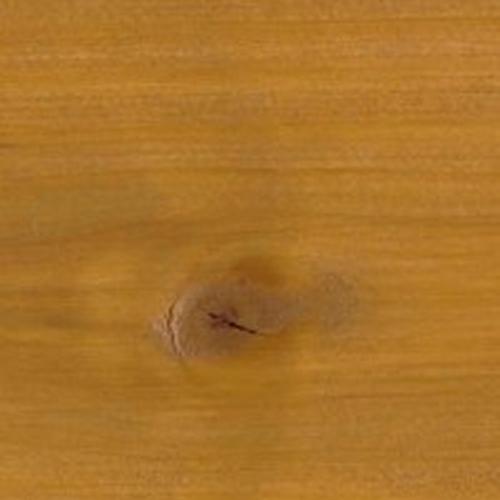



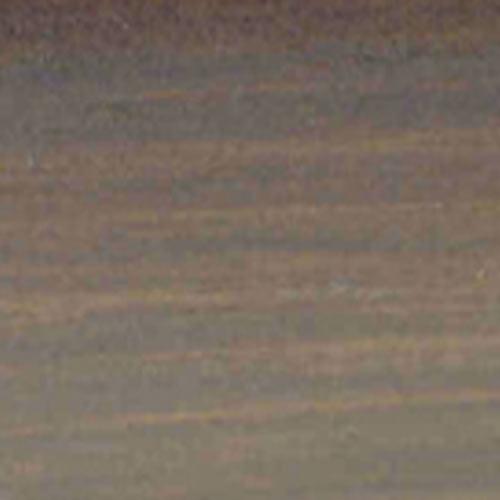

Deck Defense is available in seven colors to match our most popular colors, but we’ve now added the ability to order custom colors! If you have a particular color in mind for your deck, contact your local Perma-Chink Systems store to discuss our custom color option.
Choose Deck Defense for your home’s deck, railings, and fencing and receive these benefits:
- Excellent weather resistance
- Excellent color retention
- Allows texture and grain to show through
- Low odor and VOC
- Contains Trans-Oxide pigments for enhanced UV protection
- Easy application
- Easy soap and water clean-up
- Coverage rate: 175-250 sq. ft. per gallon, depending on substrate condition and application methods
- See label directions for additional information
Click the question to see the answer.
What makes Deck Defense better than other products?
Deck Defense is a true, penetrating water-borne product without any sort of emulsified oils or alkyds. The product penetrates the wood substrate and forms lattices to strengthen and support the natural cellulosic fibers for protection from the inside out, not only on the surface.
How about water protection?
We have incorporated ingredients in the formula to serve as a deterrent to water intrusion. One must remember that waxes are sacrificial, and the beading on the surface will go away over time. This does not mean a re-coat is necessary. It is just an indication the waxes have worn away from the surface. The protection for the wood is still in place.
I already have a finish on my deck; does this have to be removed before I can apply the improved Deck Defense?
The old rule of thumb says for the best success with a coating, the best practice is to remove any old finish before applying a new product. However, if you are applying over an older, tired oil-based product, you can apply the new Deck Defense after a thorough cleaning with Wood ReNew™ or Log Wash™. If you have previously applied Deck Defense, you can also apply the newer product after cleaning. If there has been a film-forming product applied (Vista, Endure, or “painted” surfaces), then it will need to be removed prior to the application of the new Deck Defense.
Is there protection against UV damage in Deck Defense?
Yes, there are UV inhibitors within the product, plus, as transparent iron oxide pigments are also used to produce the desired color, they will enhance the UV protection through the sun-blocking properties of the color itself.
Is Deck Defense safe for the user as well as the environment?
The product is considered non-toxic, but as with any product, certain precautions should be observed as they just make good sense. Wear gloves and eye protection when applying the product and avoid inhaling vapors (See precautions on the label). Shrubbery and plants should be rinsed before and after application (or covered). Covering adjacent surfaces like concrete or paver pathways is also a good practice.
Pre-Application steps needed?
First and foremost; the surface needs to be clean and dry. New treated wood needs to “season” before application. This process will vary with temperature and humidity and the actual moisture content of the new wood. On older wood, a thorough cleaning with Wood Renew will help to restore the color of the wood and remove stains and dirt. Make sure to adequately rinse with water and check the pH of the run-off water to make sure all the surfaces have been rinsed well. Ph of run-off water should be around 6.5 to 7.5 (depending on the pH of the water source). Make sure to check the fasteners and condition of the wood prior to cleaning, replacing any decayed or unstable wood.
Do I need to sand the wood first?
In an ideal world, sanding would be best. But most applicators and homeowners do not want to go through the effort or labor expense to do so. Sanding increases the mechanical adhesion of the surface and will also make the substrate color match better. The sanded surface also opens the substrate and promotes better penetration of the product. If a decision is made to sand, we recommend 60-grit or possibly even 40-grit paper. Media blasting may also be used but may be considered overkill unless the entire home is being media blasted. After sanding or blasting, wash with Log Wash, rinse well, and allow for complete drying prior to application.
How do I mix the product?
Before applying Deck Defense, mix well. The colorants used in Deck Defense do not settle hard and re-disperse easily. DO NOT USE POWERED MIXING EQUIPMENT, as this action can possibly shear the backbone of the product and cause product failures. As with any product, box the pails together if there are different batch numbers.
How do I apply Deck Defense?
Applying Deck Defense is very easy, and many methods or “tools” can be used. On surfaces such as decking or fencing, a low-pressure pump-up sprayer is the most economical. Deck Defense can also be applied with paint pads designed for deck application or with a quality brush. Rollers can also be used, but due to the low viscosity of the product, there will be some excess “splatter” when rolling. An airless sprayer can be used, and we recommend the use of a 511 or 513 tip due to the low viscosity. Apply the product in a “flooding” method to completely cover the surface to allow good penetration.
Deck Defense should be back brushed when applied by a sprayer, or when using a pad, to make sure the product is spread evenly. Work in the same direction using broad strokes to alleviate “pooling” of product, promoting even coverage for the best appearance. Do not allow “pooling” on surfaces. Work from the bottom up and back brush on vertical surfaces as you go. Do not apply in the hot sun as this can cause “flash drying” and interfere with the penetration of the product. Application temperatures are 40-90 degrees F, and that is surface temperature, not air temperature. DO NOT APPLY DECK DEFENSE OVER FILM-FORMING FINISHES (Vista, Endure, or “painted” surfaces) AS IT NEEDS TO PENETRATE THE SUBSTRATE FOR THE BEST PERFORMANCE.
How many coats are required?
Deck Defense is designed as a one-coat stain, although due to the deep penetrating properties of the product, it may appear lighter than expected. This is especially true on older surfaces that have been exposed for long periods of time. Also, as this is a semi-transparent product that allows the natural grain and texture of the surface to show through, colors may appear blotchy or uneven, and the user may want to apply another coat. If a second coat is to be applied it should be done in a “wet on wet” application, meaning the first coat needs to be wet when the second is to be applied. If a second coat is desired after the initial application has dried, allow one week for the first application to cure completely.
What is the dry time for Deck Defense?
Dry times will vary with application, airflow, temperature, and humidity. Under ideal conditions – 60 degrees F, and 50% humidity – Deck Defense will dry to the touch in about 20-30 minutes. Dry does not mean “cured”. Wait 4-6 hours before walking on the surface and 24 hours before replacing heavy furniture.
What are the coverage rates for Deck Defense?
Coverage rates will vary considerably, based on the type of substrate and methods of application. That’s why most folks buy a bit extra when they repaint, as they don’t want to go back and buy another gallon to finish. On rough-sawn wood, like fences that soak up product, it may be as low as 100-175 sq. ft. per gallon. Older deck surfaces will also tend to soak up lots of product, so figure around 175-250 sq. ft. per gallon. On new wood, expect around 250-300 sq. ft. per gallon. A second coat application will require less product.
Is Deck Defense freeze-thaw stable?
Yes, this product is freeze-thaw stable. It’s not the freezing that could cause issues; it is the number of cycles a product is exposed to that causes damage.
What are the maintenance guidelines?
Good maintenance for decks, as well as other wood surfaces, will prolong the need for re-staining or removal. Deck Defense will not flake or peel when properly applied, so a general cleaning should be done every year with Log Wash. Maintenance requirements will vary with exposure and environmental conditions, and heavy traffic. Expect to see wear in high-traffic areas such as steps and traffic patterns first. This does not mean protection is gone but indicates for appearance purposes that it’s time for a light re-coat.
How do I clean up when I am finished?
If done right after application, tools and equipment are easily cleaned with soap and water. Warm water works best.
Due to the penetrating and adhesion properties of Deck Defense; keep overspray areas wet during application and rinsed promptly when finished. Removal after three hours will be difficult, but after three days it will be almost impossible without the use of strippers or solvents. Dispose of containers in accordance with local, state, and federal guidelines (Do not reuse containers).
Although paint primers have been used for many years, clear primers for wood are few and far between. Prelude™ is the only water-based clear primer on the market that’s specifically designed for use on log homes before the application of a water-based transparent stain.

Following are a few situations where we recommend the use of Prelude:
1. After a home has been media blasted.


2. If a home is aggressively pressure washed to the point where the surface is feathered and the porosity of the wood varies from area to area.
3. On wood where the surface has been unevenly sanded.
4. On rough cut siding before the application of the color coat(s).
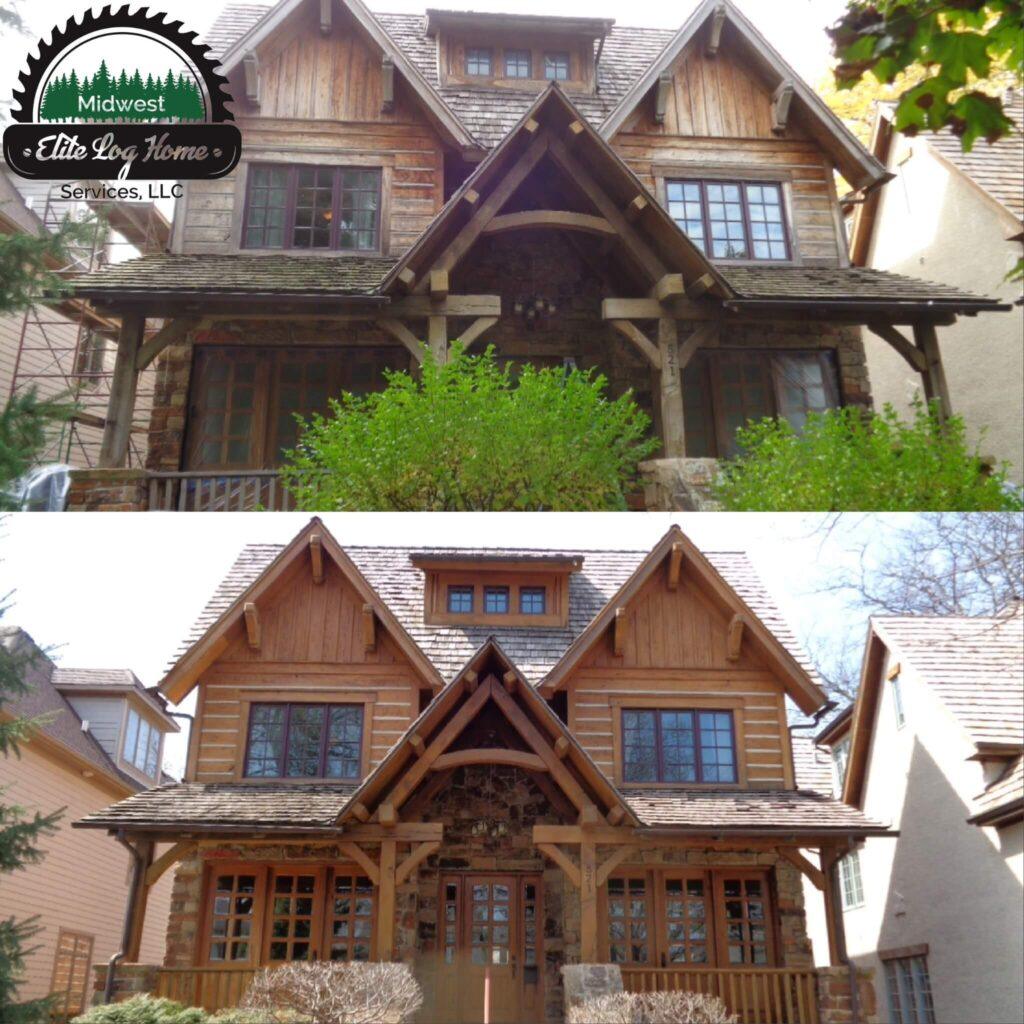
5. If a section of a wall has been repaired or replaced and the new sections don’t match the surface characteristics of the old.
6. Whenever an older home (more than 80 years old) is going to be restored. Once the surface of old wood is cleaned of grayed wood it typically takes on the porosity characteristics of a blasted surface.
7. Whenever you want to use only clear coats on interior surfaces. Although Interior Clear can be used, the use of Prelude as the first sealing coat is a somewhat better deal, since it already contains UV Boost. Once the Prelude dries, Acrylic Gloss or Satin or Sure Shine™ Gloss or Satin can be applied over it.
8. Whenever a home is completed but may remain without an exterior finish for many months, a coat of Prelude will help prevent surface graying and make it easier to clean when it comes time to stain.
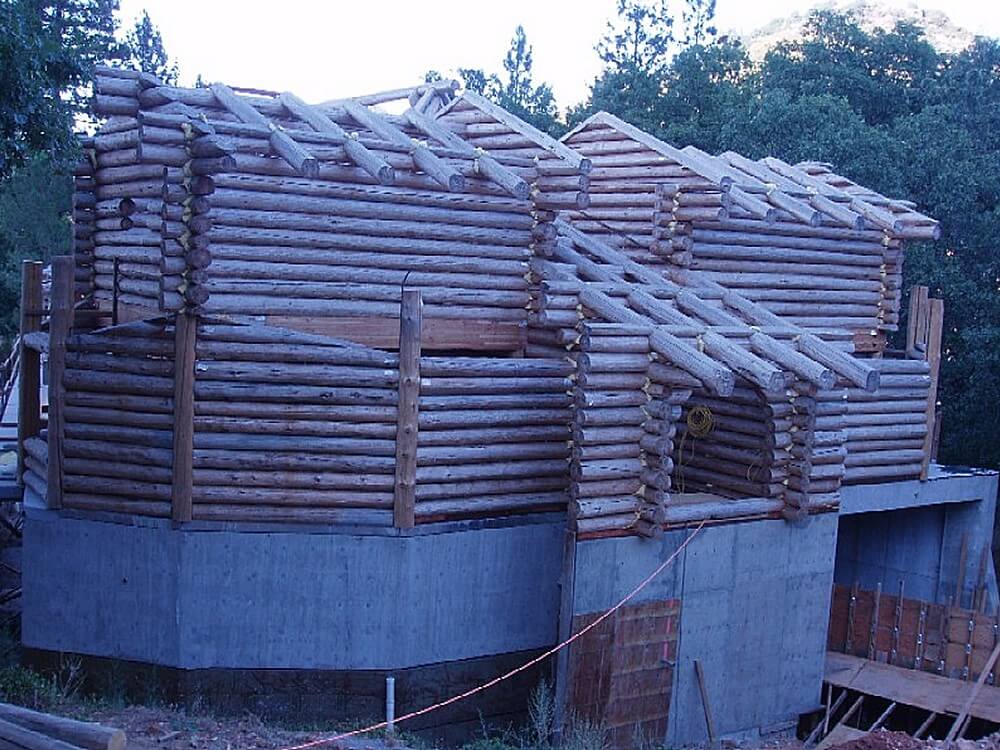

There may be other occasions when a priming coat of Prelude will make a home more attractive, easier to stain or add to the longevity of the finish system, but it should never be used on smooth surfaced wood to obtain a lighter final color. Prelude should never be used as the final coat. It is a primer and must always be covered with one of our interior or exterior finish systems.


